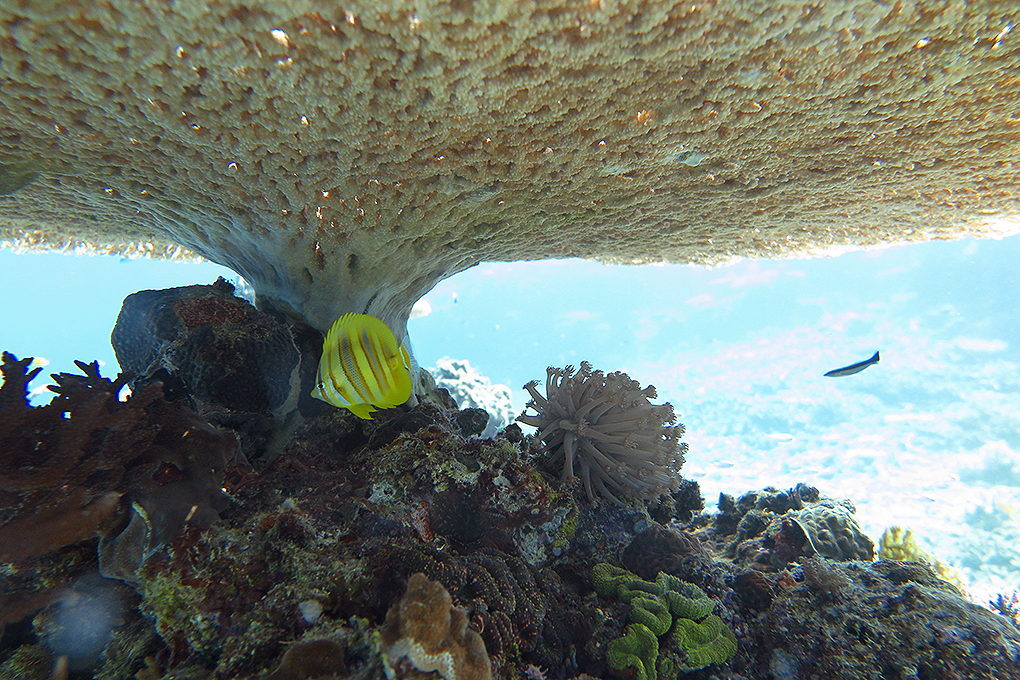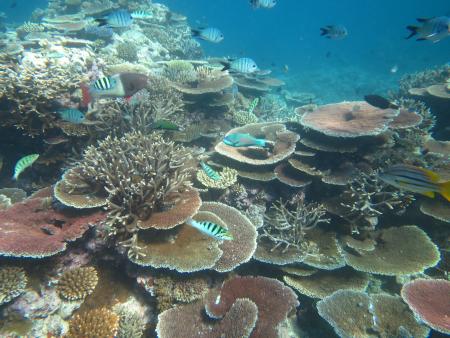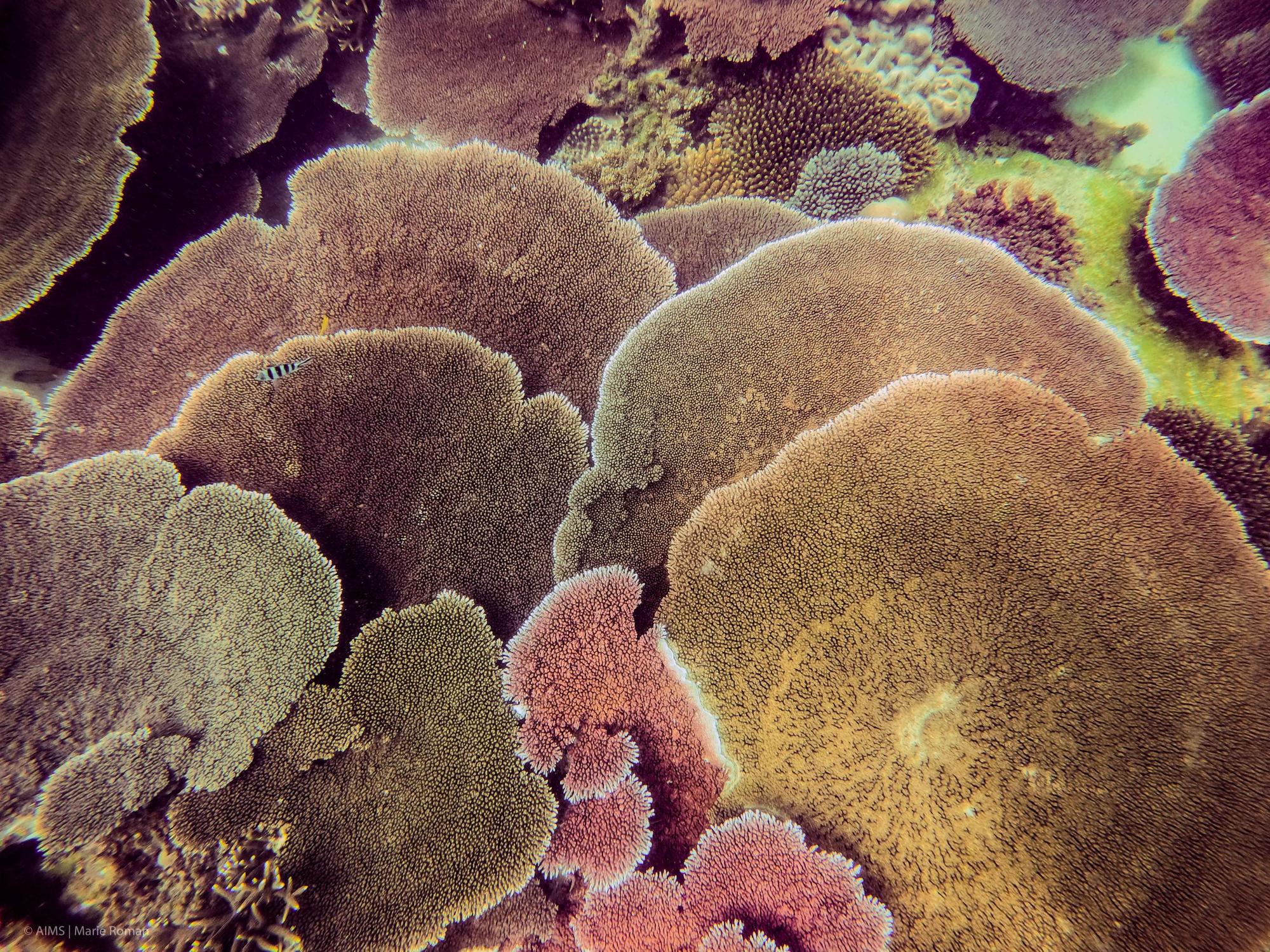via Australian Institute of Marine Science, 2 June 2021

New research shows the Great Barrier Reef’s iconic table corals can regenerate coral reef habitats at a rate 14 times faster than any other stony coral type.
Table or tabular-type Acropora spp. corals have been dubbed as “extraordinary ecosystem engineers” – with new research showing these exceptional corals can regenerate damaged reef habitats faster than any other coral type.
The new study highlights the importance of tabular Acropora, and is led by the Australian Institute of Marine Science (AIMS) in collaboration with the Great Barrier Reef Marine Park Authority, the University of Queensland and The Nature Conservancy.
AIMS scientist and lead author Dr. Juan Carlos Ortiz said the research showed overall reef recovery would slow considerably if table corals declined or disappeared on the Great Barrier Reef.
“Table corals are incredibly fast growing. Habitats in exposed reef slopes recover from disturbances at a rate 14 times higher – that’s more than two decades faster – when table corals are abundant,” he said.
“Their large, flat plate-like shape provides vital protection for large fish in shallow reef areas and serves as a shelter for small fishes, with some species almost entirely dependent on table corals.
“Even after death these corals provide value, as their skeletons are the preferred place for young corals of all types to settle.”
Table corals, also known as plate corals, are mostly found in upper reef slopes exposed to wave action, at most mid-shelf and offshore reefs in the Great Barrier Reef.

The study found table corals to have unique combination of characteristics: they provided valuable ecological functions, are among the most sensitive coral types and, most importantly, their role was threatened by a low diversity of species which have this growth form.
The authors suggest protecting table corals could be an additional management focus. Targeting management to a particular coral type based on its ecosystem function — rather than their risk of extinction alone — would be ground-breaking in terms of ecosystem-based management.
Great Barrier Reef Marine Park Authority’s Assistant Director and study co-author Dr. Rachel Pears said table corals were fast growing and sensitive species.
“Table corals are still frequently seen on outer reefs, but their presence shouldn’t be taken for granted as they are vulnerable to combined impacts,” she said.
“These corals do not handle intensifying thermal stress well, are easily killed by anchor damage, highly susceptible to diseases, and are the preferred meal for crown-of-thorns starfish.
“The good news is there are tangible actions we can take to protect these corals such as targeted crown-of-thorns starfish control and anchoring restrictions.”
University of Queensland’s scientist and study co-author Professor Peter Mumby said while table corals promoted high rates of recovery, they did not necessarily bring high biodiversity.
“We know table corals do a big service for these reefs, but it’s not a silver bullet for recovery,” Mumby said. “Protecting table corals could be part of a suite of actions that look at reef recovery, with other management focused more specifically on protecting biodiversity.”
Professor Mumby said it was also important to remember the biggest threat to the reef was climate change, and effective global action to reduce emissions significantly was paramount to protecting coral reefs.
The research drew on decades of data from AIMS long term monitoring program, revealing coral reef habitats took up to 32 years to recover, from 5% coral cover to 30% coral cover, where table corals had not recolonised after disturbances.

These low recovery rates were in stark contrast to reefs where table corals returned and recolonised, with these habitats recovering to 30% coral cover in just seven and a half years.
Given their extraordinary ecosystem function, the research indicated table corals should also be considered in restoration initiatives, like coral enhancement or assisted colonisation.
“Anyone who has been on the mid-shelf or offshore areas of the Great Barrier Reef would have seen table corals,” Dr Ortiz said.
“We can think of table corals as the iconic charismatic ‘mega coral’ of the Great Barrier Reef, just like whales, turtles and dolphins are the Reef’s iconic charismatic megafauna.”
The study, titled Important ecosystem function, low redundancy and high vulnerability: the trifecta argument for protecting the Great Barrier Reef’s tabular Acropora, was published in Conservation Letters.





